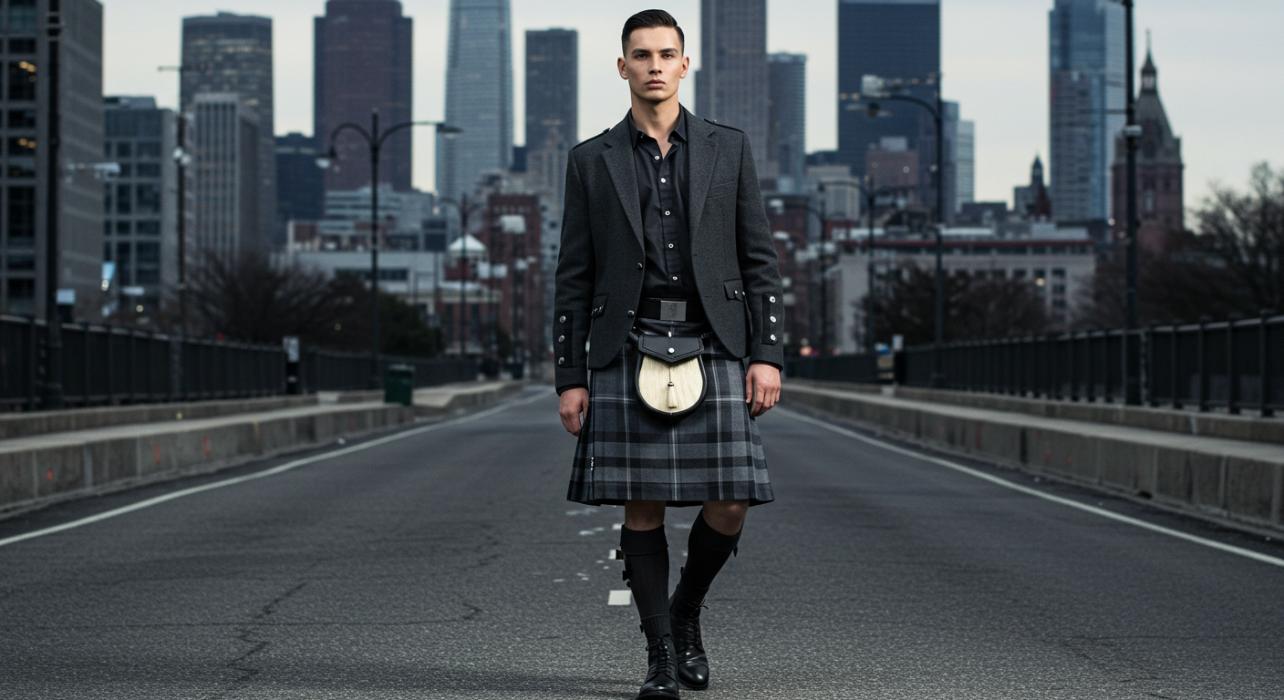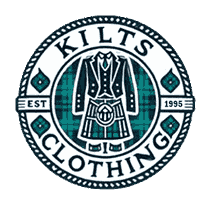The Evolution of Man Kilt Fashion: Breaking Gender Norms in Kilt Fashion

Traditionally associated with Scottish and Irish heritage, the kilt has experienced a significant evolution over the years. Once a garment reserved for men in these cultures, the kilt is now gaining global recognition for its ability to break gender norms and promote inclusivity. In this blog, we will explore how kilt fashion has evolved, how it's challenging traditional gender roles, and how modern designers and pop culture have embraced it as a fashion statement.
The Traditional Man Kilt: Historical Context
Historically, the kilt symbolizes pride, masculinity, and culture. Originating in the Scottish Highlands, the kilt was initially worn by men as a practical garment for working in the rugged, unpredictable landscapes of the region. It was more than just clothing—it was an identity, a sign of belonging to a clan, and a symbol of national pride. Traditionally made from woolen tartan fabric, the kilts for men was a utilitarian garment, signaling a man's social status or heritage.
The traditional kilt was designed with practicality in mind. Its wraparound style and adjustable pleats provided mobility, warmth, and protection. For centuries, the kilt was worn by men of all walks of life—from warriors and soldiers to farmers and dignitaries. However, it remained a strictly male garment, rarely considered suitable for women.
Shifting Gender Norms: The Role of Fashion in Changing Perceptions
As fashion has evolved, so has the perception of gender and clothing. Historically, fashion was heavily gendered, with strict rules dictating what men and women could wear. In recent decades, however, fashion has embraced a more inclusive and fluid approach to clothing. The breaking of gender norms in fashion has been led by forward-thinking designers, celebrities, and activists who have recognized the importance of clothing as an expression of personal identity.
Fashion is no longer confined to the traditional expectations of masculinity and femininity. This shift has allowed once-gendered items like kilts to transcend traditional roles and appeal to a broader, more diverse audience. Today, kilts are not just a symbol of masculinity but also an expression of individuality and freedom from societal expectations.
Man Kilt Fashion in Modern Times: Breaking Boundaries
In recent years, the kilt has evolved beyond its traditional design to become a fashionable, versatile piece of clothing that both men and women can wear. Designers have reimagined the classic kilt with modern materials, colors, and cuts to appeal to contemporary tastes. For instance, while tartan remains a staple in kilt fashion, designers have introduced leather, denim, and even satin versions of the garment, making it more accessible and stylish for people of all genders.
Unisex kilts are now commonplace, with many brands offering kilt styles designed to be worn by anyone, regardless of gender. These modern interpretations of the kilt are breaking away from the strict gender divisions that once defined this garment. Today, you can find kilts with varied pleating, fabric choices, and embellishments that suit different personal tastes, breaking free from the traditional notion that the kilt is only for men.
The Influence of Celebrities and Pop Culture
Celebrities and pop culture have played an essential role in the evolution of male kilt fashion. David Beckham is one of the most notable examples of a celebrity embracing the kilt as a fashion statement. The soccer icon has been spotted wearing kilts on and off the red carpet, bringing the garment into the mainstream. Beckham's kilt-wearing style has helped challenge the idea that kilts are only for formal occasions or traditional wear, making them a fashion-forward item that can be worn casually.
Other celebrities, including Kanye West and Pharrell Williams, have also worn kilts for streetwear. These figures have helped the kilt gain visibility in the fashion world, particularly in the context of breaking gender norms. Celebrities are often trendsetters, and their embrace of the kilt has contributed significantly to its rising popularity.
Moreover, movies and TV shows have portrayed characters wearing kilts, further cementing their place in modern fashion. From the period drama Outlander to the modern style icon status of characters like James Bond in Skyfall, the media frequently uses kilts to represent strength, masculinity, and rebellion. This portrayal in pop culture has broadened the appeal of the kilt, making it a symbol of defiance against traditional gender roles.
Kilt Man Fashion in Global Context
While kilts are closely associated with Scotland and Ireland, the garment has spread well beyond these regions. Today, kilts are worn by men and women across the globe, and their design has been adapted to fit the cultural preferences of different countries. In countries like the United States, kilts are often worn as a fashion statement. In contrast, in countries like New Zealand and Canada, they continue to be worn for ceremonial purposes.
The versatility of the kilt allows it to be easily incorporated into different cultural contexts. Whether part of a military uniform, a wedding outfit, or a casual day look, the kilt has proven to be a garment that transcends borders and adapts to various cultures. Modern interpretations of the kilt are designed to suit different tastes, making it a garment that everyone, regardless of gender or background, can embrace.
Fashion-forward Designs: Kilts for Everyone
One of modern kilt fashion's most exciting aspects is the diverse designs available. Today, kilts come in various styles, fabrics, and cuts to suit every individual's needs. While traditional kilts may have been limited to tartan fabric, modern kilts come in an array of colors, materials, and patterns, allowing people to wear the garment in a way that reflects their style.
For example, leather kilts, denim kilts, and even futuristic metallic kilts have become increasingly popular. These designs provide a contemporary twist on the traditional kilt, making it more appealing to a wider audience. With these innovative designs, kilts are no longer limited to one specific group—they are now a fashion statement that anyone can embrace, regardless of gender.
The Future of Kilt Fashion: A Step Toward Gender Equality
As fashion evolves, the kilt will likely continue to break down gender barriers. The rise of unisex kilts, the influence of celebrities, and the growing acceptance of gender-fluid fashion all point to a future where kilts are no longer seen as masculine garments but as versatile and inclusive pieces of clothing.
Kilts have the potential to symbolize freedom and equality, allowing people to express their individuality without being constrained by outdated gender norms. As more designers and consumers embrace the kilt as a gender-neutral garment, kilts will likely become an even more important part of global fashion.
Conclusion: Embracing the Man Kilt in a Modern World
The evolution of kilt fashion has been an exciting journey that reflects the broader shifts in society's understanding of gender and fashion. From its origins as a traditional garment worn exclusively by men to its current status as a fashion-forward, gender-neutral piece, the kilt has broken free from its historical confines.
As society embraces diversity and inclusivity, the kilt will remain a symbol of self-expression, breaking gender norms and allowing individuals to express their unique identities. The modern kilt is a garment for everyone—whether you're a man, woman, or anyone in between—and it's here to stay as a symbol of progress in fashion.


